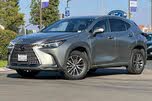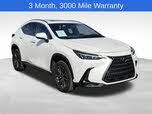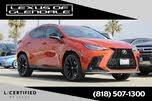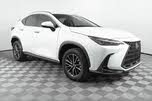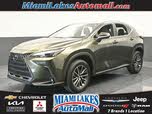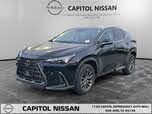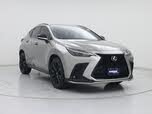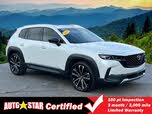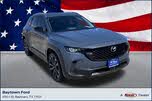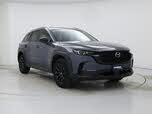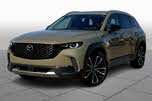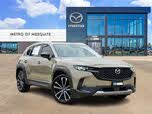2022 Lexus NX vs 2023 Mazda CX-50
Overview | ||
MSRP | $38,350 | $27,550 |
Average price | $38,375 | $28,425 |
Listings | ||
Ratings & Reviews | ||
User reviews | ||
Expert reviews | 7.8 out of 10Read full review | 7.2 out of 10Read full review |
Pros & cons | Pros
| Pros
|
Summary | With the redesigned 2022 Lexus NX, the luxury brand is aiming at a young, affluent, diverse, and tech-savvy customer. At the same time, the new 2022 NX is built upon the brand pillars that Lexus says will support all of its future products. They include bold design, advanced technology, electrification, and a dynamic tuning recipe called Lexus Driving Signature. Does the redesigned NX reflect those foundational building blocks? We went to Phoenix, Arizona to find out. | With the new 2023 CX-50, Mazda doubles down on the immensely popular compact crossover SUV segment. For now, the CX-50 complements rather than replaces the existing CX-5 model, and it targets active lifestyle adventure seekers instead of the sophisticated urbanites typically drawn to the CX-5. The 2023 Mazda CX-50 shares powertrains and underlying technology with the CX-5, but it's otherwise different, offering slightly more rear-seat room and practical cargo space in a longer, lower, and wider design. Given Mazda’s future SUV product plans calling for new CX-70 and CX-90 models, we expect the CX-50 will ultimately replace the CX-5. |
Video | ||
Popular Features & Specs | ||
Engine | 2.5L 203 hp I4 | 2.5L 187 hp I4 |
Drive Train | FWD | AWD |
Seating Capacity | 5 | 5 |
Horsepower | 187 hp @ 6000 rpm | |
MPG City | 26 | 24 |
MPG Highway | 33 | 30 |
Engine | ||
Engine Name | 2.5L 203 hp I4 | 2.5L 187 hp I4 |
Torque | 186 lb-ft @ 4000 rpm | |
Horsepower | 187 hp @ 6000 rpm | |
Drivetrain | FWD | AWD |
Fuel Economy | ||
MPG City | 26 | 24 |
MPG Highway | 33 | 30 |
Interior | ||
Seating Capacity | 5 | 5 |
Safety | ||
Front Crash Overall | 4 | 5 |
Side Crash Overall | 5 | 5 |
Dimensions & Capacity | ||
Cargo Space | 22.7 cu ft | 31.4 cu ft |
Curb Weight | 3660 lbs | 3706 lbs |
Height | 65.8 in | 63.5 in |
Length | 183.5 in | 185.8 in |
Width | 73.4 in | 80.8 in |
Wheelbase | 105.9 in | 110.8 in |
Maximum Payload | 1142 lbs | |
Number of doors | 4 | 4 |
Maximum Towing Capacity | 2000 lbs | 2000 lbs |
The 2022 Lexus NX went on sale in December 2021, featuring four model series: NX 250, NX 350, NX 350h, and NX 450h+. Buyers could choose from a variety of trim levels, depending on the model, including Base, Premium, F Sport, and Luxury, with base prices ranging from $37,950 to $49,000, excluding a $1,075 destination charge.
Both the NX 250 and the turbocharged NX 350 were non-electrified. The NX 350h was a hybrid, while the NX 450h+ was a plug-in hybrid. The review primarily focused on the turbocharged NX 350 in F Sport and Luxury trims. Design, one of Lexus's key pillars, was evident in the NX’s aggressive spindle grille and refined details reminiscent of the Lexus IS sports sedan. The new NX was also longer, wider, and taller than its predecessor, offering more passenger and cargo space. Most models came with NuLuxe simulated leather, although the NX Luxury had real leather and open-pore wood trim. Moreover, a panoramic sunroof appeared for the first time in the NX lineup.
The NX 350 F Sport stood out with a unique mesh-pattern grille, body-color fender trim, 20-inch gloss black wheels, and black mirrors. Inside, sport-bolstered seats, a black headliner, new F Sport steering wheel, and specialized instrumentation competed with dark interior trim, alloy pedals, and scuff plates, giving it a sportier vibe. Lexus aimed for a minimalist interior, contrasting with the previous version's button-filled dashboard. However, the touch-integrated climate control system in the 14-inch touchscreen could be challenging to navigate quickly. Some controls lacked intuitive symbols, potentially complicating initial use. Meanwhile, essential physical controls for stereo volume and temperature adjustments remained, easing some operations. Lexus ensured overall quality, though certain elements, like the turn signal, felt less premium.
The 2023 Mazda CX-50 brought a blend of Mazda’s trademark elegance and newfound ruggedness. Key styling features included a blunt nose, long hood, and a cabin positioned toward the rear wheels. The vehicle also wore bold fender swells, substantial lower body and wheel arch cladding, and artificial front and rear skid plates, enhancing its rugged persona. Despite these rugged elements, the overall look was cohesive and appealing, especially with the standard black grille and mirror caps and available 20-inch wheels. A forthcoming CX-50 Meridian Edition featured exclusive wheels, all-terrain tires, splash guards, and a roof-mounted load platform.
The CX-50 came in two main versions: the 2.5 S and 2.5 Turbo. The base 2.5 S had a 187-hp engine, while the 2.5 Turbo featured a stronger engine producing up to 256 hp and 320 lb-ft of torque with premium fuel. The 2.5 S started at $26,800, and the 2.5 Turbo topped out at $41,550, not including a $1,225 destination charge. The model tested was the top-tier CX-50 2.5 Turbo Premium Plus, featuring black leather with caramel stitching and quality materials throughout, resulting in a refined interior.
The compact crossover exuded elegance inside and out, but there were small design hiccups, like the inconspicuous central dashboard air vent. Despite these minor flaws, the Mazda CX-50 maintained a sophisticated charm.
Lexus emphasized electrification, making the NX 350h hybrid with a combined 239 hp and the NX 450h+ plug-in hybrid with 302 hp notable choices. Nevertheless, the review focused on the turbocharged NX 350 with a 275 hp 2.4-liter four-cylinder engine, offering 317 lb-ft of torque between 1,600 and 3,600 rpm. It came with an eight-speed automatic transmission sending power to all four wheels.
The NX 350 set itself apart with its performance credentials. The new platform facilitated a lower center of gravity and enhanced dynamics. Although not expected to challenge performance-tuned German luxury SUVs, the NX 350 F Sport felt composed and capable on winding roads near Carefree, Arizona. The vehicle accelerated smoothly and responsively, clocking 0-60 mph in 6.6 seconds. Fuel economy figures varied, with the F Sport averaging 22.2 mpg, while the Luxury trim achieved 25.5 mpg, compared to Lexus’s estimated 25 mpg combined.
In comparison, the NX 250 offered a more modest 203 hp, facilitated by a 2.5-liter engine, and it featured similar driving modes as the NX 350. However, the turbocharged 2.4-liter felt less refined compared to its German rivals. Though the F Sport handled better and absorbed road impacts effectively, Lexus still needed to work on minimizing wind and road noise, despite extensive efforts in noise dampening. One major drawback to the NX was its limited off-road capabilities due to its 7.7 inches of ground clearance.
Most Mazda CX-50 buyers preferred the more affordable 2.5 S model for its fuel efficiency and value. The base engine delivered 187 hp and 186 lb-ft of torque, paired with a six-speed automatic transmission. Mazda estimated a combined 27 mpg for this engine, but for better performance, buyers leaned towards the 2.5 Turbo. Running on premium fuel, the turbocharged engine yielded up to 256 hp and 320 lb-ft of torque. Mazda predicted a combined 25 mpg for the turbo model, yet real-world figures hit just 23.4 mpg.
The turbocharged engine was gratifying, providing smooth acceleration without noticeable turbo lag. Different driving modes, including Normal, Sport, Off-Road, and Towing, adjusted the SUV’s behavior slightly, assisted by G-Vectoring Control technology. The CX-50 felt more connected to the road than typical SUVs, a trait likened to Mazda’s sedans. It performed well even on mountainous roads, feeling more nimble and car-like despite its elevated stance and up to 8.6 inches of ground clearance.
The CX-50’s 3,500-pound towing capacity outshone the NX’s utility. During towing tests, the CX-50 managed to haul a fully-loaded trailer effortlessly on flat roads but showed strain on mountainous terrain despite improved powertrain cooling.
Lexus claimed increased interior room for the 2022 NX, though the new dashboard created a more snug ambiance. The interior was comfortable, notably with heated and ventilated front seats and thoughtful padding on the driver's side door and center console. F Sport trims offered better bolstering to suit sportier driving styles.
Rear seats provided adequate space, comfort, and features like air conditioning vents, heated seats, and USB ports. The available panoramic sunroof extended over the rear seats, enhancing the feeling of roominess. Luxury trims included a sophisticated Thematic Ambient Illumination system for a customizable atmosphere.
Lexus asserted a 14% increase in cargo space to 22.7 cubic feet behind the rear seats, expandable to 46.9 cubic feet with seats down. While this was a step up, the NX had more modest cargo capacity compared to its peers.
Our top-of-the-line CX-50 2.5 Turbo Premium Plus model was replete with heated front and rear seats, heated steering wheel, and climate-controlled features that made it exceptionally comfortable. Ventilated front seats and dual-zone climate control ensured a pleasant environment even on warmer days.
Both front and back seats were comfortable enough for extended drives, though the front seats could use slightly more support. Rear-seat specs were comparable, but backseat passengers benefitted from near 90-degree door openings and unobtrusive wheel wells, simplifying entry and exit. Storage solutions could be more innovative, with missed opportunities for additional storage spots on the door panels and dashboard.
The CX-50 offered 31.4 cubic feet of cargo space behind the rear seats, marginally more than the CX-5. For bulkier items, the load area between the wheel wells was narrow, though side bins and grocery bag hooks were helpful additions. Folding the rear seats increased cargo capacity to 56.3 cubic feet, surpassing the NX.
Lexus made great strides with the new Lexus Interface infotainment system. Both the standard 9.8-inch and optional 14-inch touchscreens were equipped with wireless Apple CarPlay and Android Auto, along with advanced voice recognition and cloud-based features. This was a huge leap forward compared to the outdated Remote Touch Interface with its touchpad.
The standard 10-speaker sound system could be upgraded to a 17-speaker Mark Levinson setup, providing excellent audio quality. Lack of a signal in remote areas limited music streaming, though the navigation system's offline mode was a useful backup. Voice and Intelligent Assistant systems enabled natural conversation controls, and the included three-year Drive Connect trial offered numerous features, including Intelligent Assistant and cloud-based navigation.
The NX also allowed for User Profiles, making it easy to transfer settings across Lexus models, and featured a digital key option utilizing smartphones. While tech was impressive, the 14-inch touchscreen easily collected fingerprints and lacked multitasking capabilities for simultaneous data panels.
Mazda Connect, featured in every CX-50, provided wireless Apple CarPlay, Android Auto, and Mazda Connected Services, including a WiFi hotspot and remote engine start. The 2.5 S models came with an 8.8-inch display, while higher trims upgraded to a 10.25-inch display.
Historically, Mazda Connect lacked touchscreen controls, opting instead for center console buttons, steering wheel controls, and vocal commands, which weren’t always user-friendly. However, with the CX-50, touchscreen compatibility for Apple CarPlay and Android Auto was introduced, even though the screen itself remained distant from the driver. The Bose 12-speaker sound system offered an impressive audio experience in higher trims.
HUD in the CX-50, known as the Active Driving Display, relayed vital information clearly within the driver’s line of sight, including blind-spot warnings, enhancing safety without needing to look away from the road.
Packed with safety technologies, the 2022 NX came standard with Lexus Safety System+ 3.0. Noteworthy features included Risk Avoidance Emergency Steer Assist, Oncoming Vehicle Detection, Oncoming Pedestrian Detection, and Curve Speed Management, which optimized cruising speed around curves.
Real-world testing validated the effectiveness of the Emergency Driving Stop System, which could bring the NX to a stop if the driver became unresponsive. The NX also had standard features like blind-spot warning, rear cross-traffic alerts, and Safe Exit Assist. Upper trims added rear pedestrian detection, adaptive front lighting, parking assist, and a panoramic view monitoring system.
Mazda’s reputation for safety extended to the CX-50, though formal crash testing by the IIHS was pending. The CX-50 featured a broad array of standard driver assistance features, while the 2.5 Turbo Premium Plus had additional safety technologies like Traffic Jam Assist, active blind-spot monitoring, parking sensors, and surround-view camera, although such features were more limited in availability across lower trims.
The safety systems generally worked well, but during the review, the adaptive cruise control twice failed to recognize a vehicle cutting in, necessitating manual braking to prevent collisions. This indicated a need for a broader field of sensitivity for the system.
CarGurus highlights
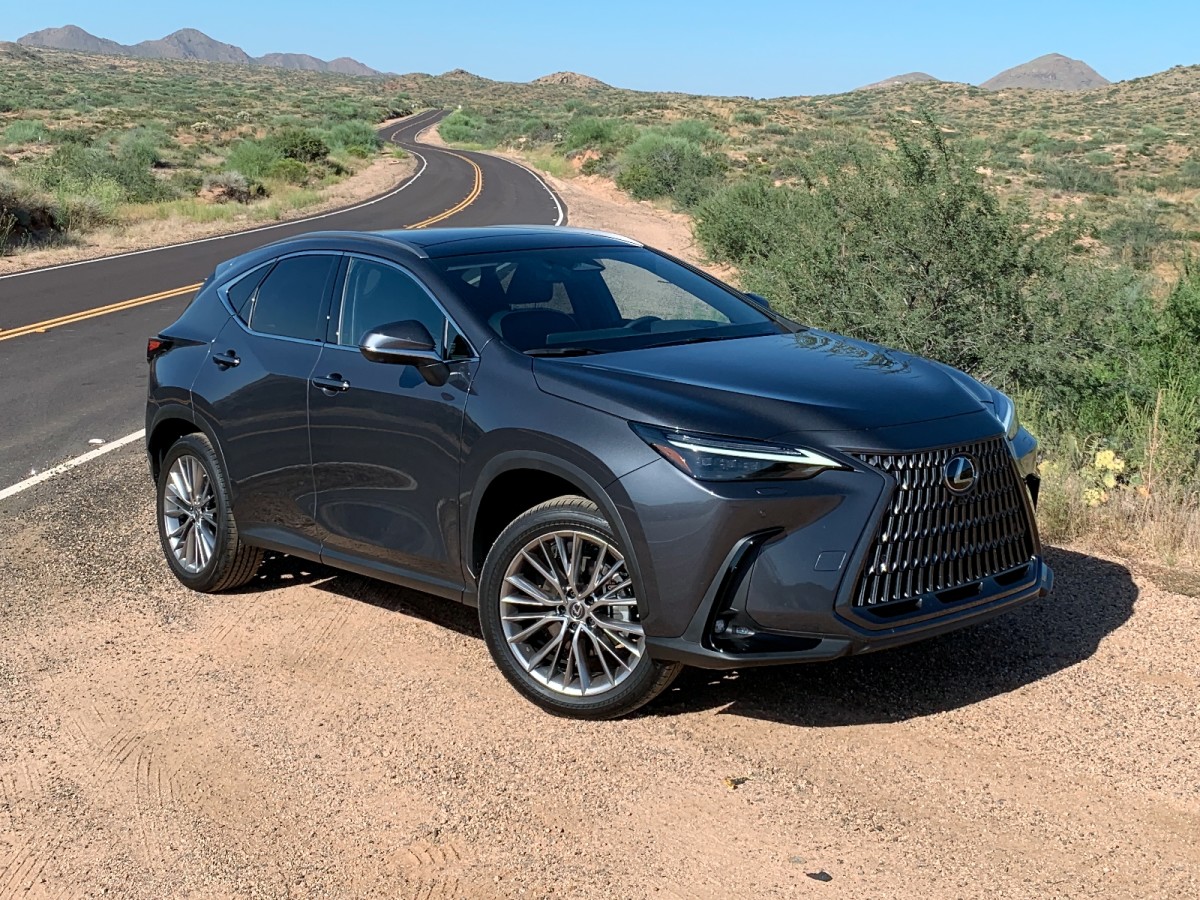
According to CarGurus experts, the overall rating for the 2022 Lexus NX is 7.8 out of 10, while the 2023 Mazda CX-50 scores 7.2 out of 10. Based on these ratings, the Lexus NX receives the higher overall score and offers advanced technology and a more luxurious interior. For buyers focused on in-cabin tech and premium materials, the Lexus NX is a stronger choice. However, if your needs lean towards a more rugged, versatile crossover suitable for moderate off-roading along with a slightly sportier driving experience, the Mazda CX-50 is worth serious consideration.
Choose the 2022 Lexus NX if:
Shop Now- You prioritize cutting-edge in-car technology and advanced infotainment systems.
- Luxurious, high-quality interior materials, and enhanced comfort features are your primary consideration.
- You prefer a brand with a focused approach to modern, intuitive interior design and excellent craftsmanship.
Choose the 2023 Mazda CX-50 if:
Shop Now- You seek a rugged, stylish crossover that can handle both city streets and moderate off-road journeys.
- You appreciate a slightly sportier driving experience with better towing capacity and ground clearance.
- You value a user-friendly infotainment system with physical controls and top-tier audio quality.

By: CarGurus + AI
At CarGurus, our team of experienced automotive writers remain at the heart of our content operation, conducting hands-on car tests and writing insightful guides that are backed by years of industry experience. To complement this, we are harnessing AI to make our content offering more diverse and more helpful to shoppers than ever. To achieve this, our AI systems are based exclusively on CarGurus content, ratings and data, so that what we produce is both unique to CarGurus, and uniquely helpful to car shoppers.



















